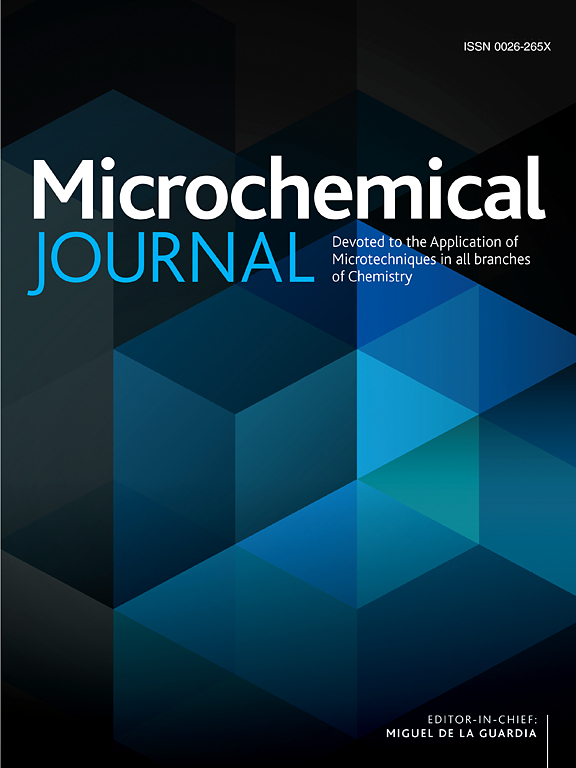Data fusion of Fourier transform infrared spectroscopy and high-performance liquid chromatography for the origin identification of different medicinal rhizomes of genus Atractylodes
IF 4.9
2区 化学
Q1 CHEMISTRY, ANALYTICAL
引用次数: 0
Abstract
The rhizomes of the genus Atractylodes, such as A. lancea, A. chinensis, A. japonica, A. coreana, and A. macrocephala, have been extensively utilized as prominent traditional herbal medicines across China, Japan, South Korea and other Asian countries. Due to the close genetic relationships and morphological similarities, confusion and misuse frequently arise. Although various methods exist to identify Atractylodes species based on their chemical profiles, they often focus on a limited subset, overlooking species like A. coreana which are frequently observed in the traditional herbal medicine market in northern China and limiting comprehensive identification. In this study, data fusion of spectral and chromatographic data was used for the first time to identify five different medicinal rhizomes derived from genus Atractylodes. It also serves as a preliminary exploration of the integration of Fourier Transform Infrared Spectroscopy (FTIR), High-Performance Liquid Chromatography (HPLC) fingerprinting, and chemical pattern recognition within the domain of origin identification of traditional herbal medicines. Our study demonstrated that the mid-level data fusion of FTIR and HPLC data using partial least squares-discriminant analysis (PLS-DA) and t-distributed stochastic neighbor embedding (t-SNE) constituted an effective approach for identification. While PLS-DA excels in supervised classification, t-SNE complements it by offering intuitive visualization of high-dimensional data, revealing clustering patterns among the species. The 81 batches of dried rhizomes from five species of Atractylodes were divided into training and prediction sets at a 2:1 ratio, employing the K-S algorithm, achieving a prediction accuracy of 100%. The integration of t-SNE further confirmed the separation achieved by PLS-DA, enhancing the interpretability of the classification results and highlighting the potential of data fusion combined with advanced visualization techniques in distinguishing closely related herbal species. Additionally, the results showed that the chemical differences of Atractylodes among various varieties were mainly reflected in polysaccharides, alkynes, and ketones, the chemical composition of A. macrocephala was very different from that of other species, while A. japonica was close to that of A. coreana. This may indicate the genetic distance among them. It can successfully distinguish the five often-confused medicinal rhizomes of Atractylodes, achieving a prediction accuracy of 100%. This study presents a feasible approach for identifying five closely related medicinal rhizomes of Atractylodes using data fusion, demonstrating its potential in addressing challenges associated with distinguishing morphologically similar herbal medicines.

求助全文
约1分钟内获得全文
求助全文
来源期刊

Microchemical Journal
化学-分析化学
CiteScore
8.70
自引率
8.30%
发文量
1131
审稿时长
1.9 months
期刊介绍:
The Microchemical Journal is a peer reviewed journal devoted to all aspects and phases of analytical chemistry and chemical analysis. The Microchemical Journal publishes articles which are at the forefront of modern analytical chemistry and cover innovations in the techniques to the finest possible limits. This includes fundamental aspects, instrumentation, new developments, innovative and novel methods and applications including environmental and clinical field.
Traditional classical analytical methods such as spectrophotometry and titrimetry as well as established instrumentation methods such as flame and graphite furnace atomic absorption spectrometry, gas chromatography, and modified glassy or carbon electrode electrochemical methods will be considered, provided they show significant improvements and novelty compared to the established methods.
 求助内容:
求助内容: 应助结果提醒方式:
应助结果提醒方式:


